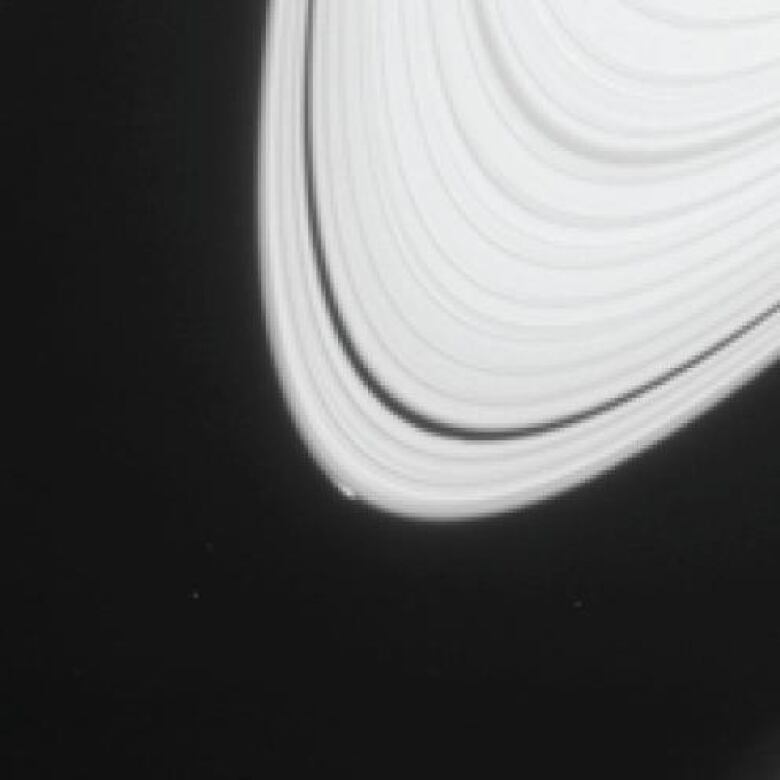Saturn moon birth may have been seen by Cassini spacecraft
Unusual bright arc and bumps in ring may be caused by newborn moon's gravity

NASA'sCassini spacecraft captured an unusual event that may be the birth of Saturn's newest moon and possibly its last ever.
"We have not seen anything like this before," said Carl Murray, a planetary scientist at Queen Mary University of London, in a statement. Murray is the lead author of the paper published this week in the journal Icarus describing the event.
Images captured by the Cassini spacecraft almost exactly a year ago show an unusually bright arc and some bumps at the edge of Saturn's outermost ring, which is normally smooth. Murray and his team think it may be caused by the gravity of a newborn moon, too small to see.

"We may be looking at the act of birth, where this object is just leaving the rings and heading off to be amoonin its own right."
The researchers have nicknamed the possible baby moon "Peggy" and suggest it is probably less than a kilometre in diameter.
Cassini is expected to move closer to Saturn's outermost ring in late 2016, which may allow it to study Peggy in more detail or capture an actual image, a NASA news release said.
62 confirmed moons
Saturn has 62 confirmed moons. The biggest and most famous is Titan, where large quantities of methane and other carbon-based molecules have been detected.
According to Murray, scientists think Saturn's rings were once much bigger, and that moons formed from the ring material over time, depleting them.
"It is possible the process ofmoonformation inSaturn's rings has ended with Peggy," NASA added in its release, "asSaturn's rings now are, in all likelihood, too depleted to make moremoons."
Cassini launched in 1997with theEuropean Space Agency's Huygens probe, with a mission to study Saturn, its rings and its moons. They arrived at Saturn in 2004 and the probelanded on Titan in 2005. Its mission was supposed to end in 2008, but has been extended until 2017.












_(720p).jpg)


 OFFICIAL HD MUSIC VIDEO.jpg)
.jpg)



























































































